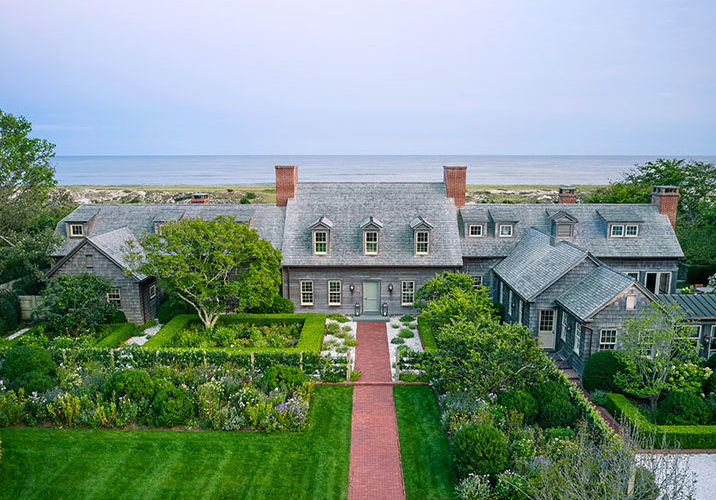Set back from the sand dunes and flanked by magnolia trees, the farmhouse on eastern Long Island seems like it’s been there since the 1700s. The weathered gray clapboards and shingles adorning a modified saltbox, the converted barn near the street, the old agrarian acreage recast in rustic elegance—every element is a chapter in the property’s generations-old story.
But the story, as it turns out, is deeply researched historical fiction. When a previous client of Ferguson & Shamamian Architects approached the SoHo-headquartered firm about building a home on a long narrow site in East Hampton, they wanted a place that would accommodate several generations of extended family, take advantage of the views out to the dunes and the Atlantic beyond, and, even though it was a brand-new residence, fit into its surroundings by representing the past it might have had.
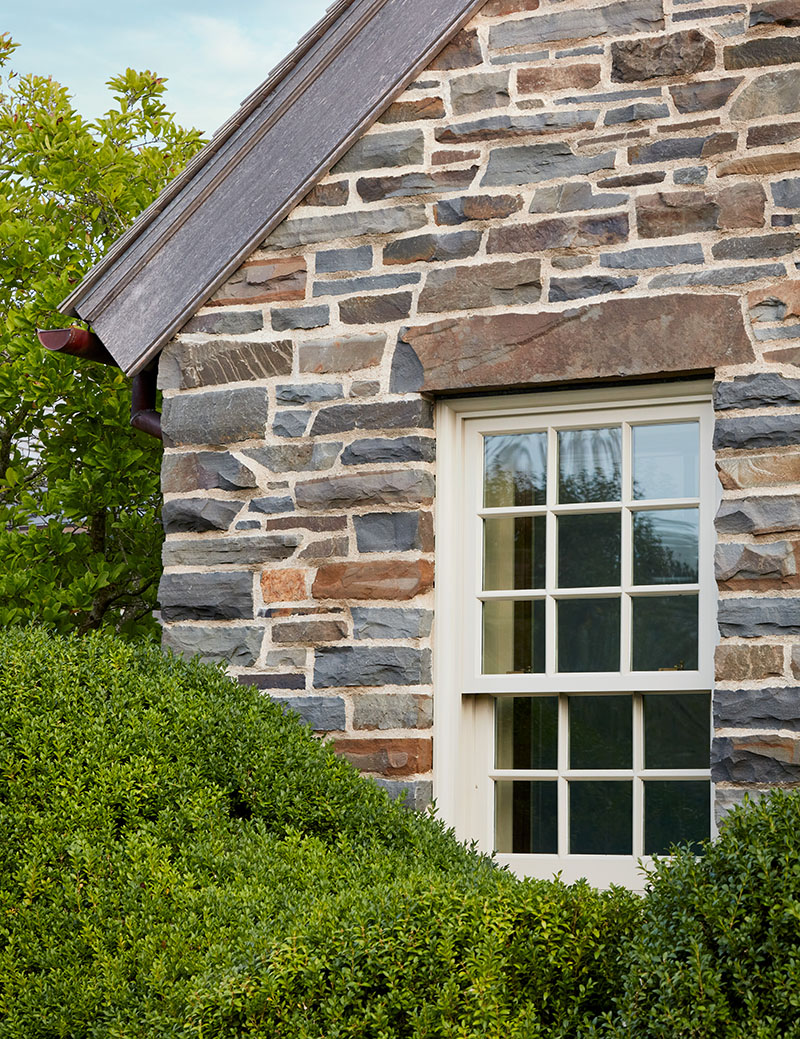

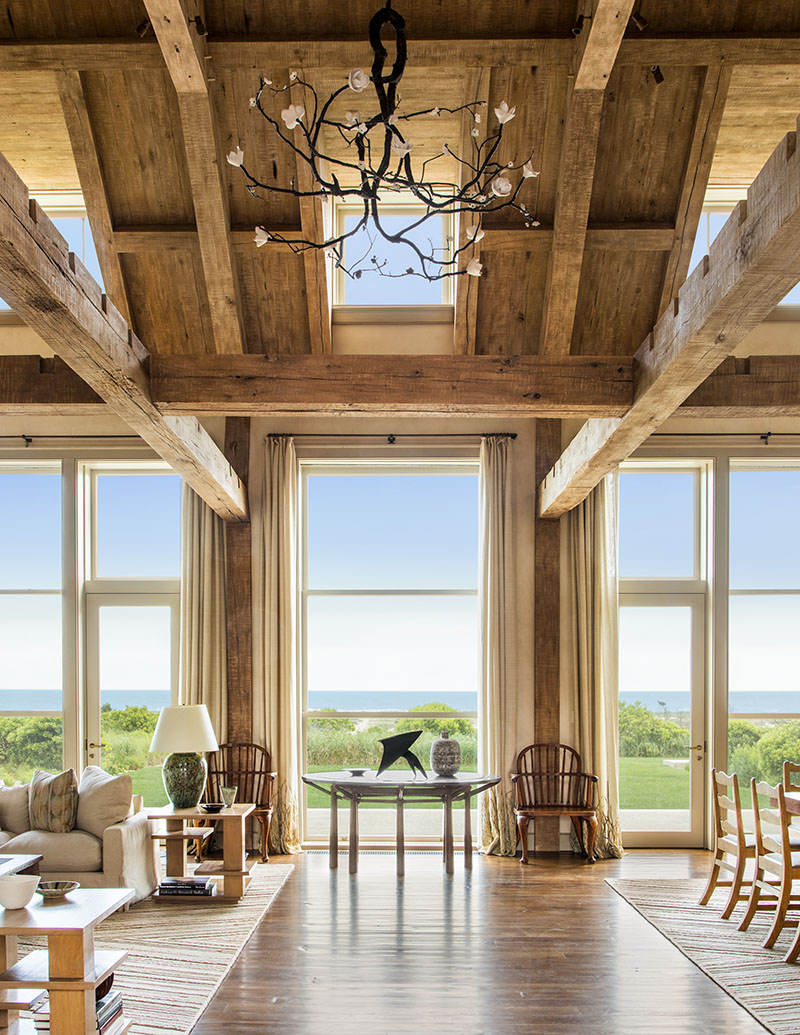

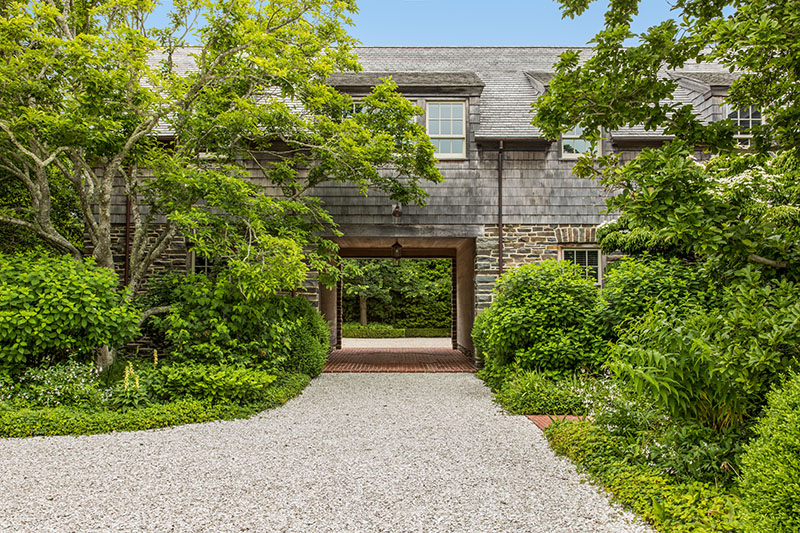

“It was really about how to create a set of buildings that resemble an 18th-century East End farmhouse, and show that this farmhouse had expanded and grown over time and taken on different characters along its history,” says Stephen Chrisman, the architect who led the design of the project and a partner who’s been with Ferguson & Shamamian Architects since 1995.
Collaborating with the homeowners as well as interior designer Michael S. Smith and landscape architect Arne Maynard, Chrisman’s team pored over old Historic American Buildings Survey documentation of East End homes and barns; explored the historic structures at East Hampton’s John Howard Payne Home, Sweet Home museum; and took detailed notes, right down to measuring the widths of the window panes and the clapboards. “We’re not glib about this: We want it to look authentic,” Chrisman says. “I try to imagine the guests coming in and saying, ‘Wow, you did a great job renovating this old house,’ while the owners just smile.”
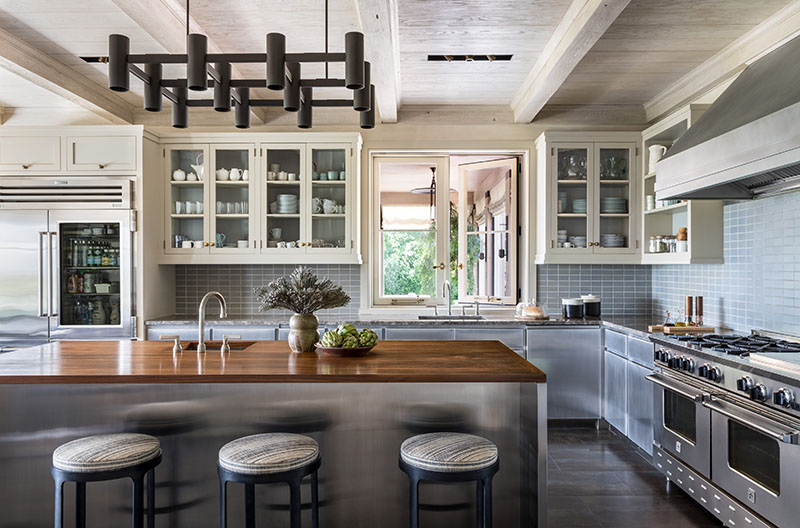

Off a quiet road, the house comes into view at the end of a pebble pathway, a one-and-a-half-story center block with pedimented dormers that connects to a series of single-story wings. Modeled on the local Amagansett farmhouse, the exterior tells the rambling home’s fictive narrative with subtlety: smaller panes on the windows of the “historic” portion, marginally larger panes in the “new” additions, thin clapboards straight from the 1700s on the main structure, shingles on the wings that could have been from the early 20th century. “Even though at first glance it’s all weathered cedar, it evolves,” Chrisman says. On a rectilinear guest suite in the westernmost portion of the main residence, a stone exterior gracefully blends several types of New York fieldstone, punctuated with a granite lintel spanning the width of the window—the final design choice, after mason Bruce O’Brien happily put together several mockups, each with different stones and mortar joints.
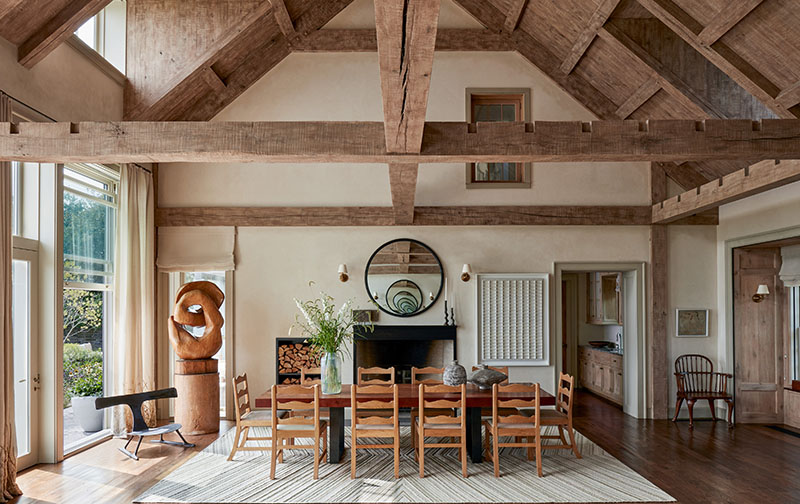

Within the home’s center block, magnificent exposed trusses and crossbeams run through the high ceilings of the great room, the space where guests gather for dinner and conversation. Pockets notched into the reclaimed timbers suggest the home once had a second floor that was removed; in reality, the pockets were created to sustain the narrative. “Architecturally, we were pretty serious about analyzing how big an 18th-century summer beam is, how big the notches are, and how far apart the joists are spaced,” Chrisman says.
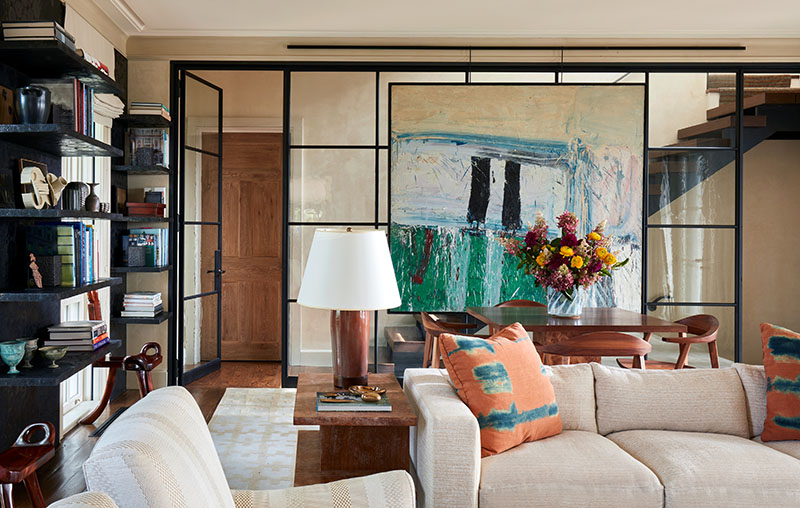

The rear façade takes a slightly different approach. Below shed-style dormers, triple-hung windows without muntins—a feature that might have been the handiwork of a 20th-century homeowner, though Chrisman notes the windows share similarities with Thomas Jefferson’s Monticello—look out over the backyard and past the shoreline. At the foot of the dining pergola, a pool extends like it’s reaching out to the ocean.
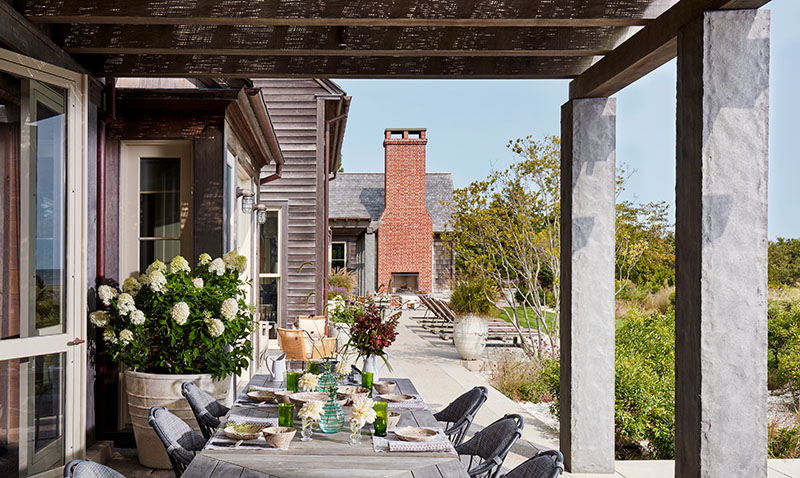

Near the road, the six-bedroom guest residence has the doors and timbers of a barn that’s been converted into living quarters, with simple interiors, wood floors, and solid vertical posts. (“There’s a nice whitewash treatment,” Chrisman says. “It still maintains the rustic characteristics, but there’s a clean feel to it, so it doesn’t feel like you’re sleeping in an old barn: you’re sleeping in a converted barn.”) On the lawn outside, an orchard of old crabapple trees grows in a grid with selective blank spots—the places where, in the imagined history of the home, trees would have died off over time. Throughout the grounds, Arne Maynard’s landscape design weaves in beech trees, box hedges, vines climbing fence posts, and a host of features that complement the manmade structures. “Oftentimes, landscapes take a long time to grow in, but Arne was able to bring in larger specimen trees, and his sensibility instantly makes things feel like they belong there and have been there,” Chrisman says.
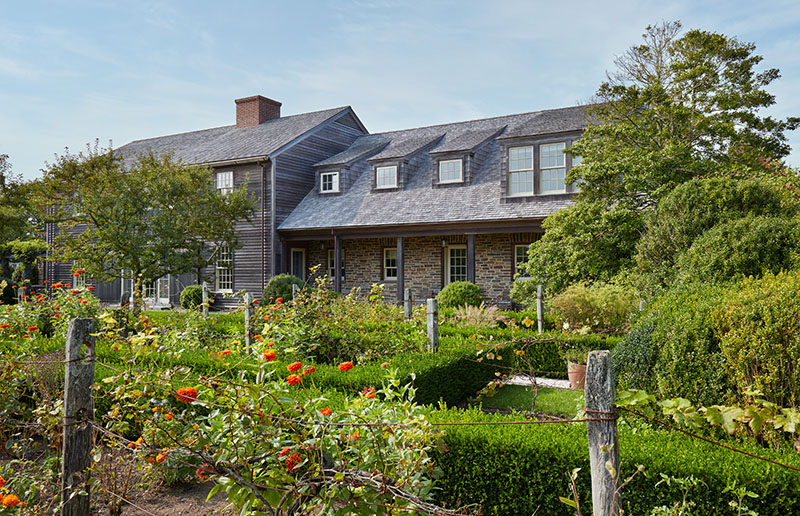

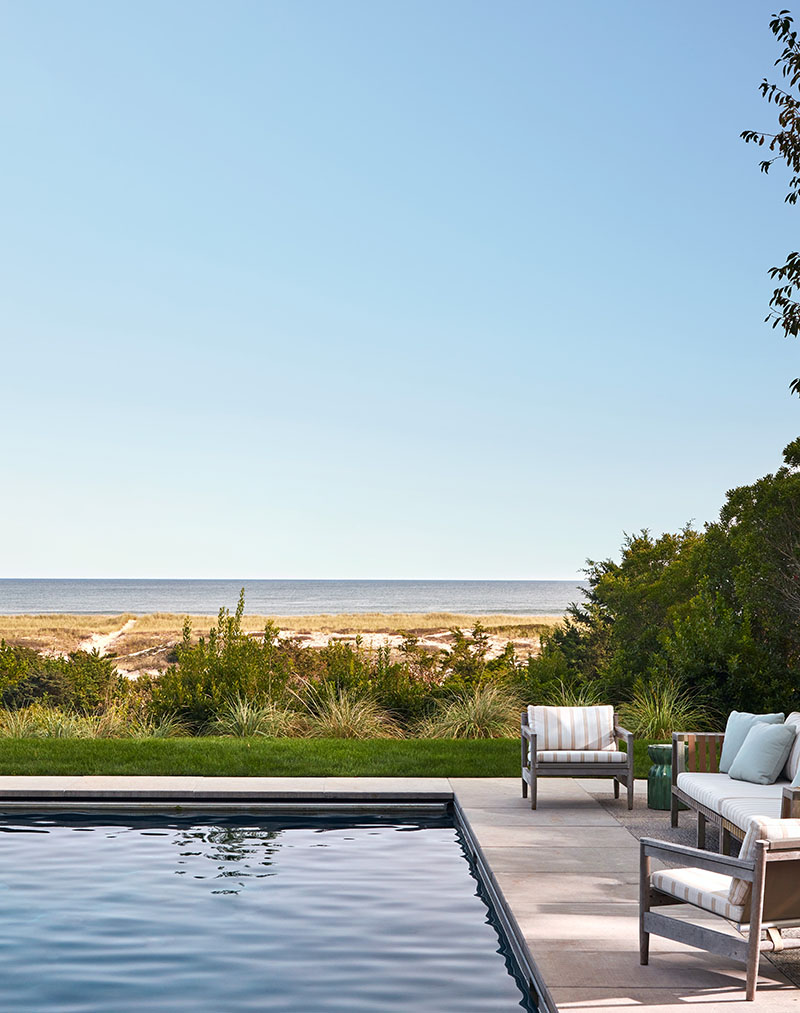

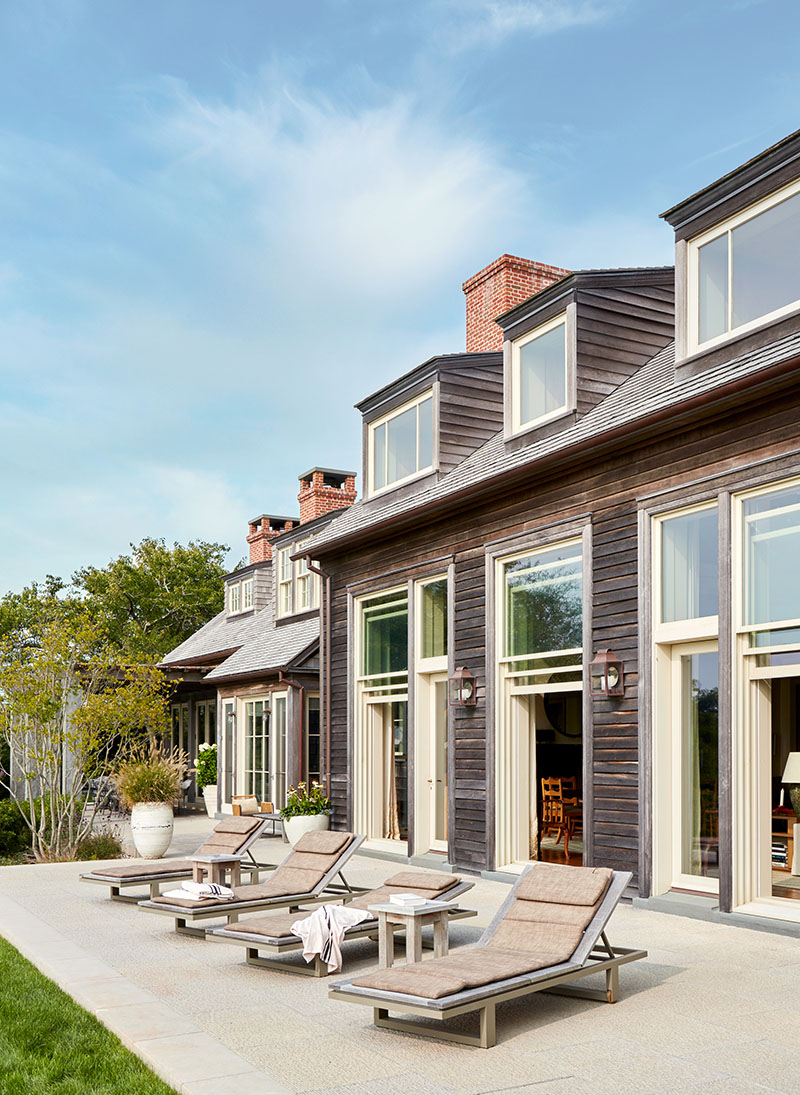

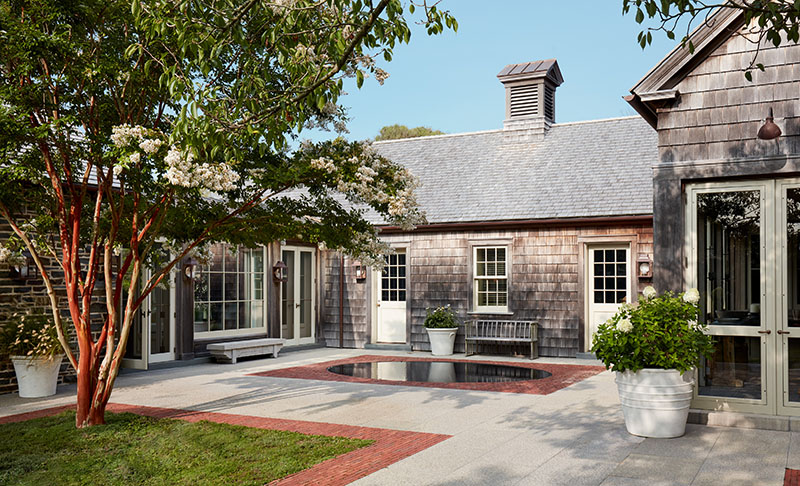

Several years later, the yarn of the East Hampton home continues. Everything feels natural. Nothing feels contrived. With the clapboards and shingles establishing their own, different shades of grey, the farmhouse has the presence of a place that’s earned its seniority. “The story,” Chrisman says, “still holds up.”
For more information, visit fergusonshamamian.com


